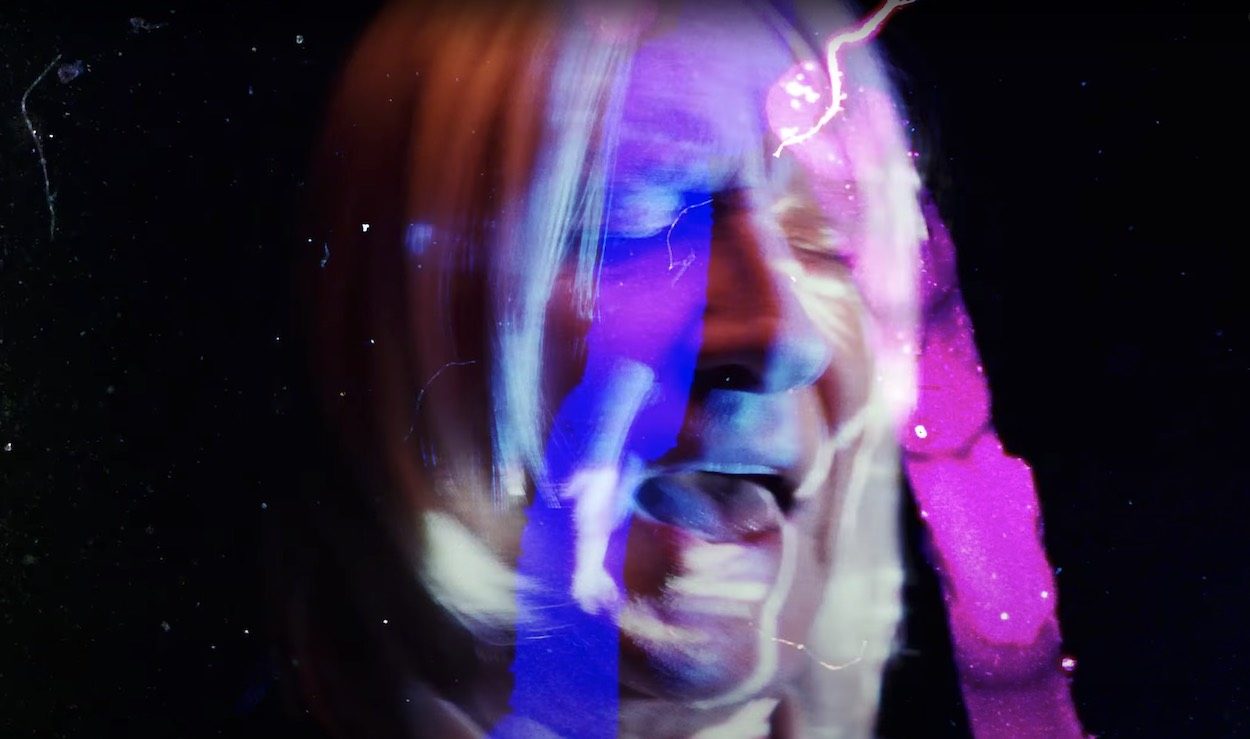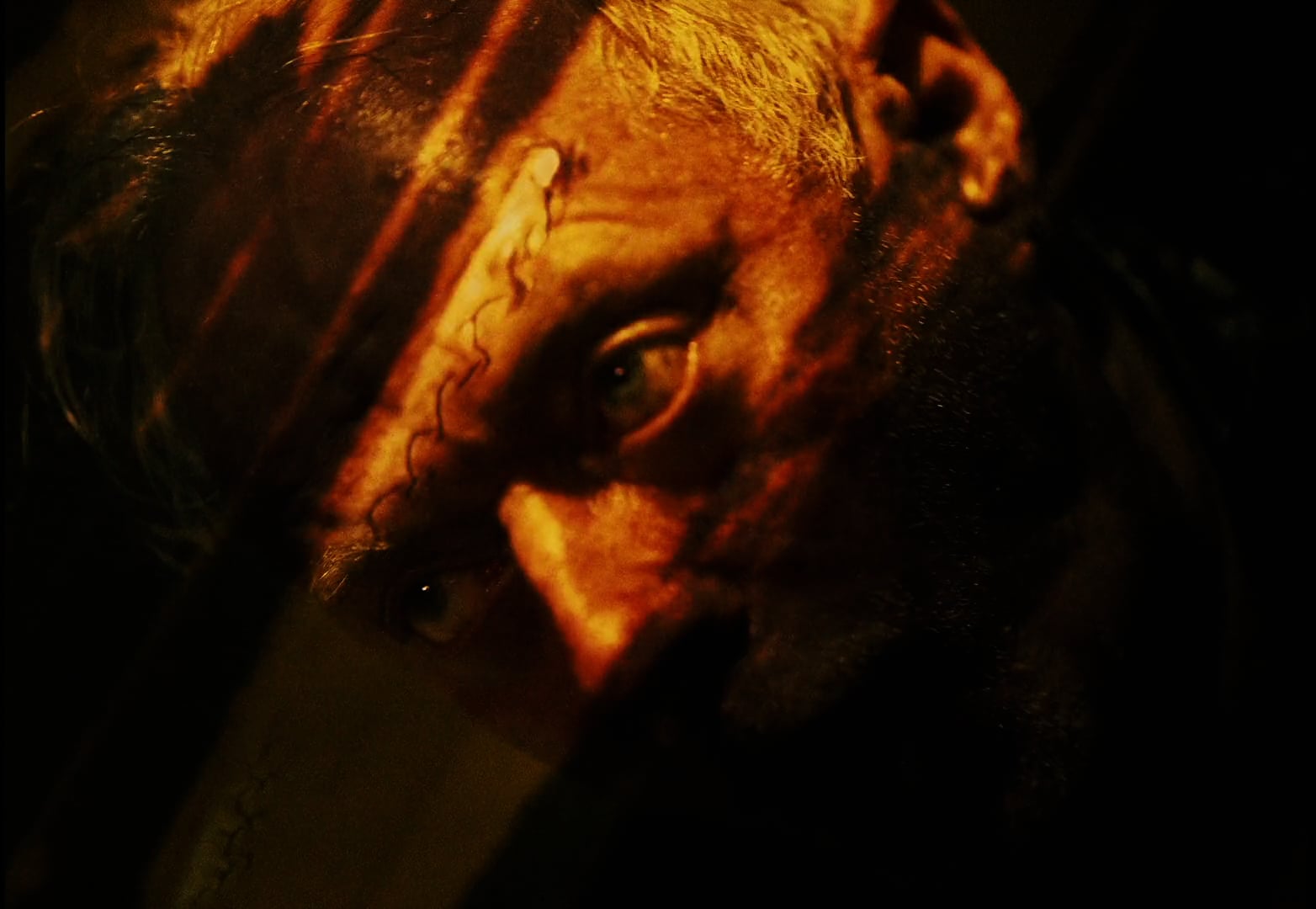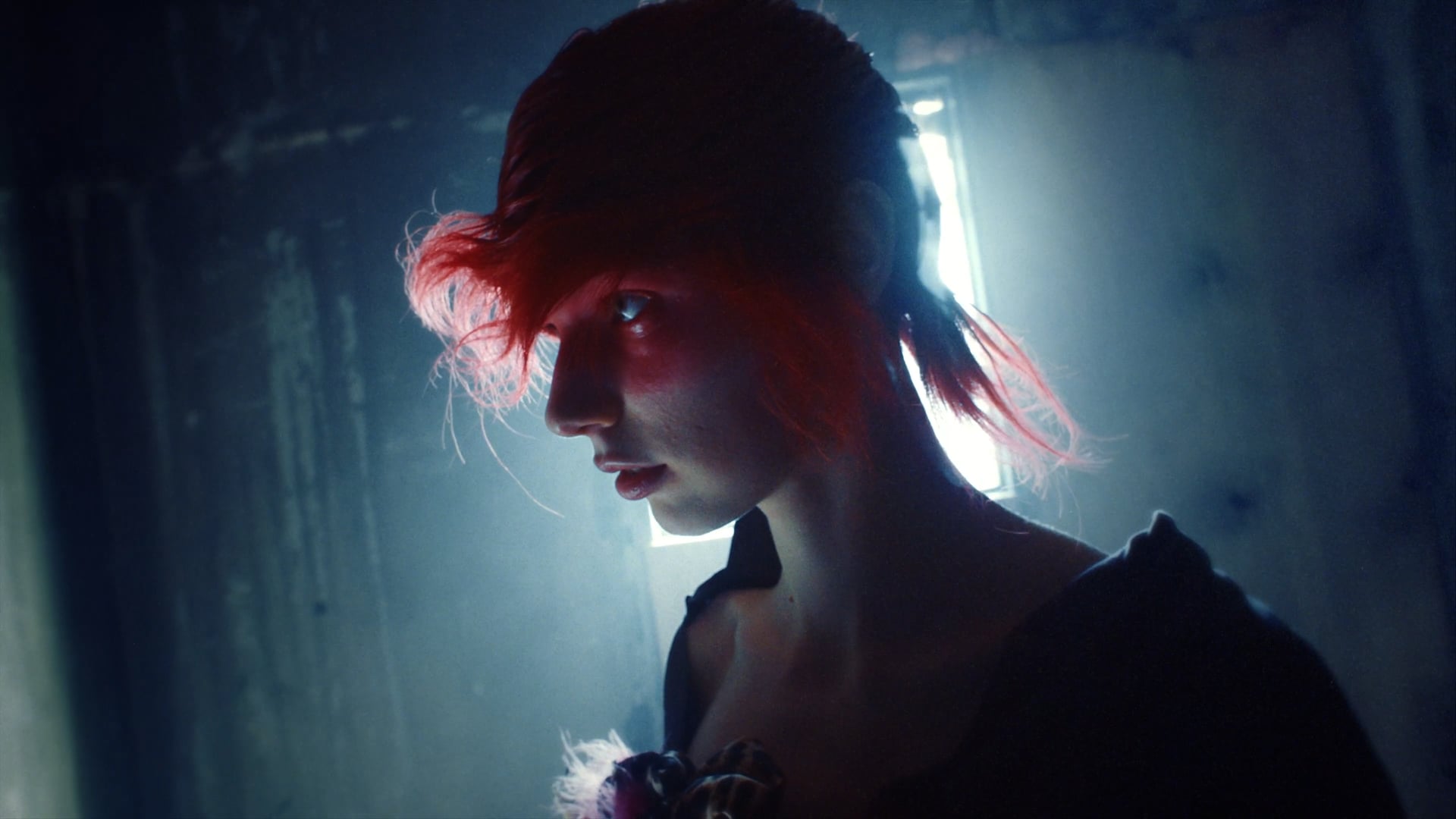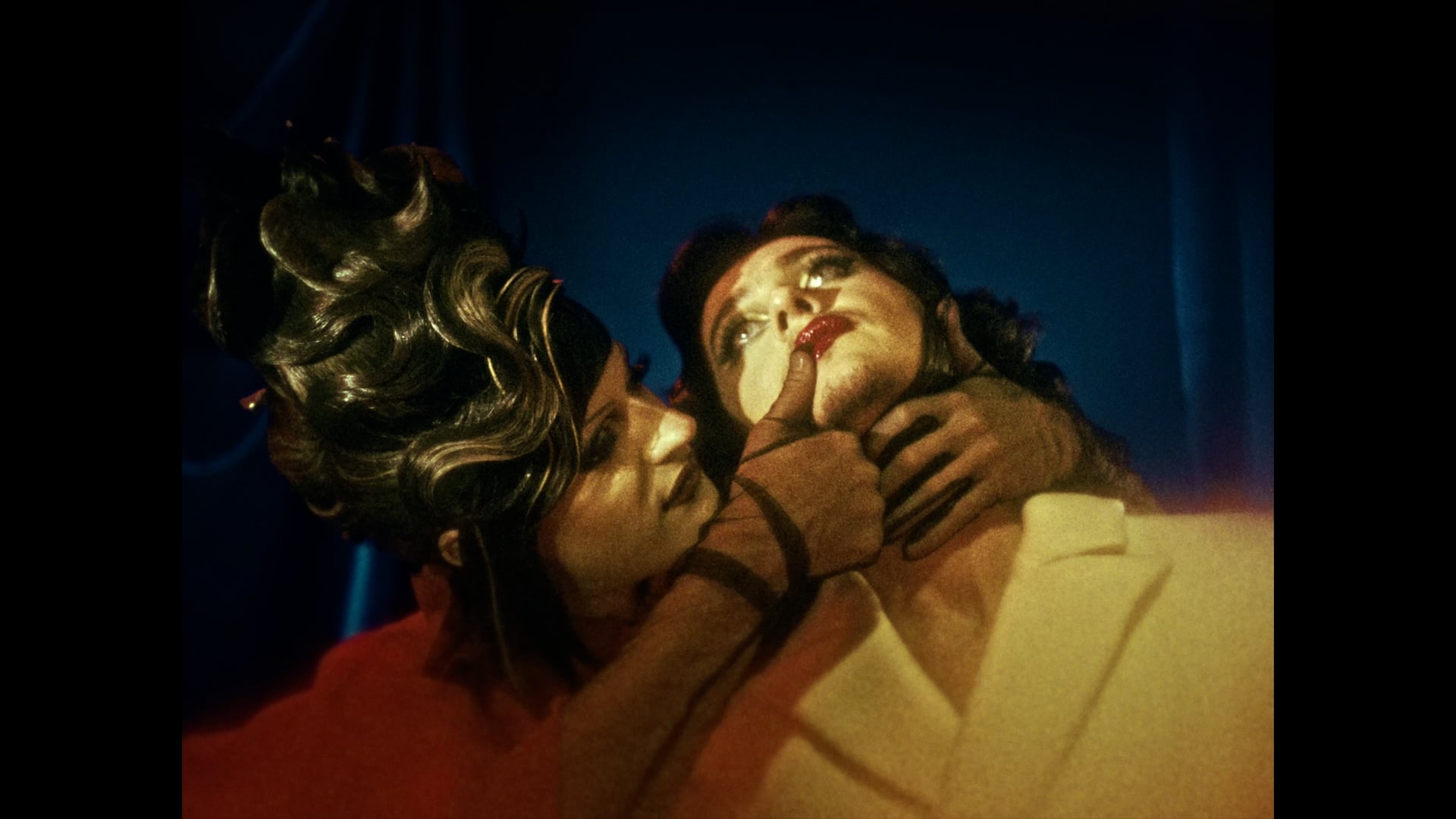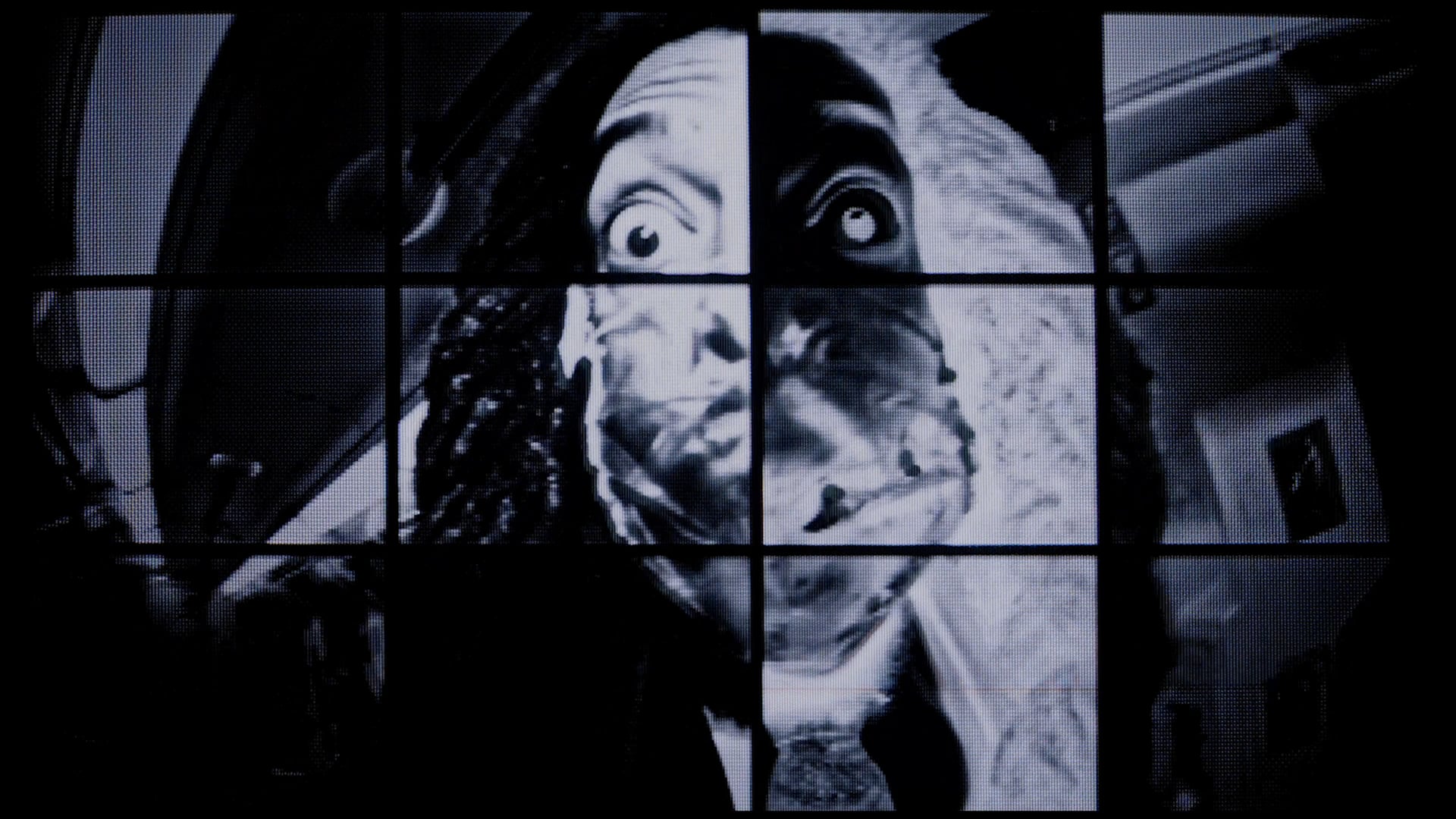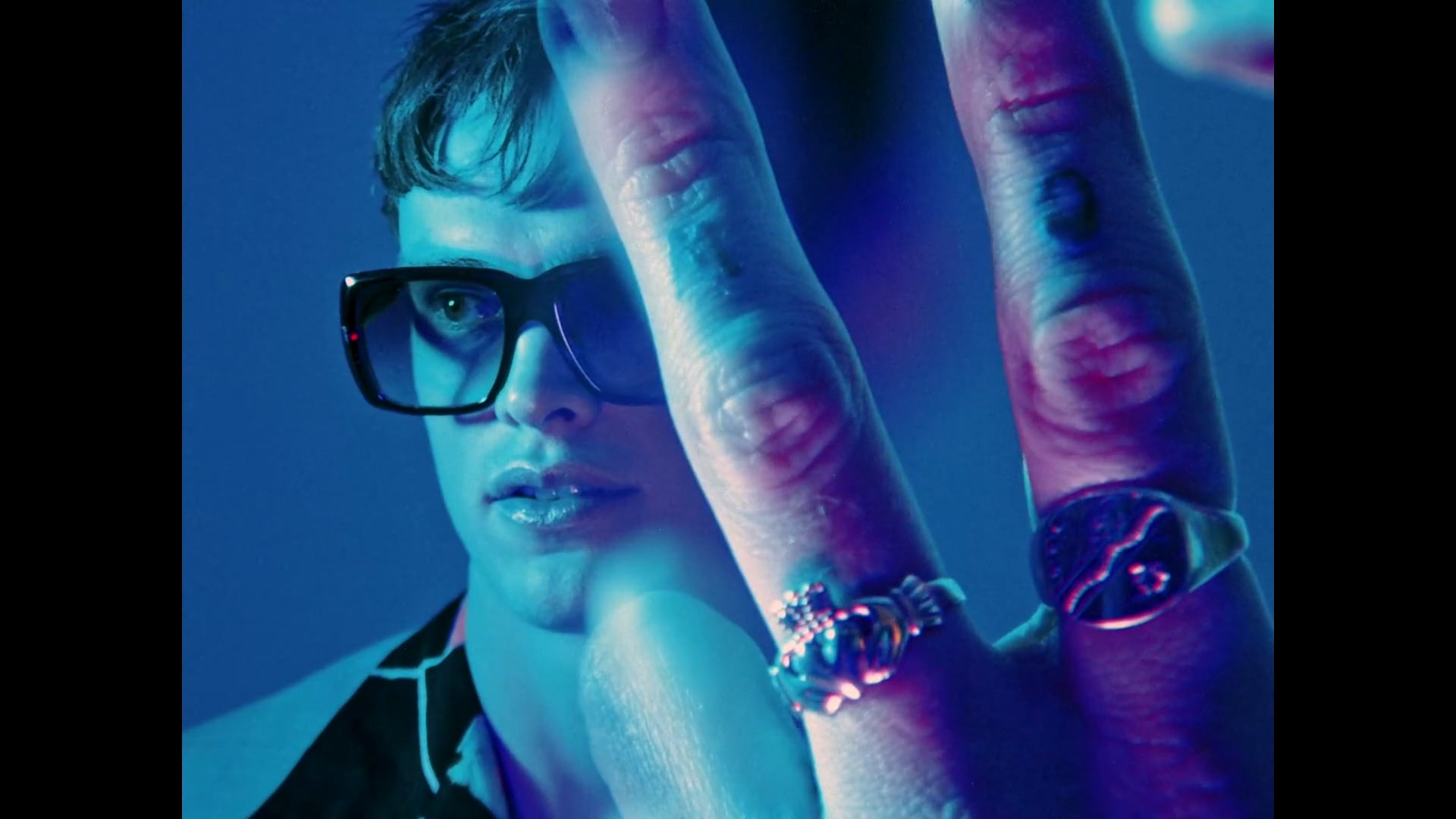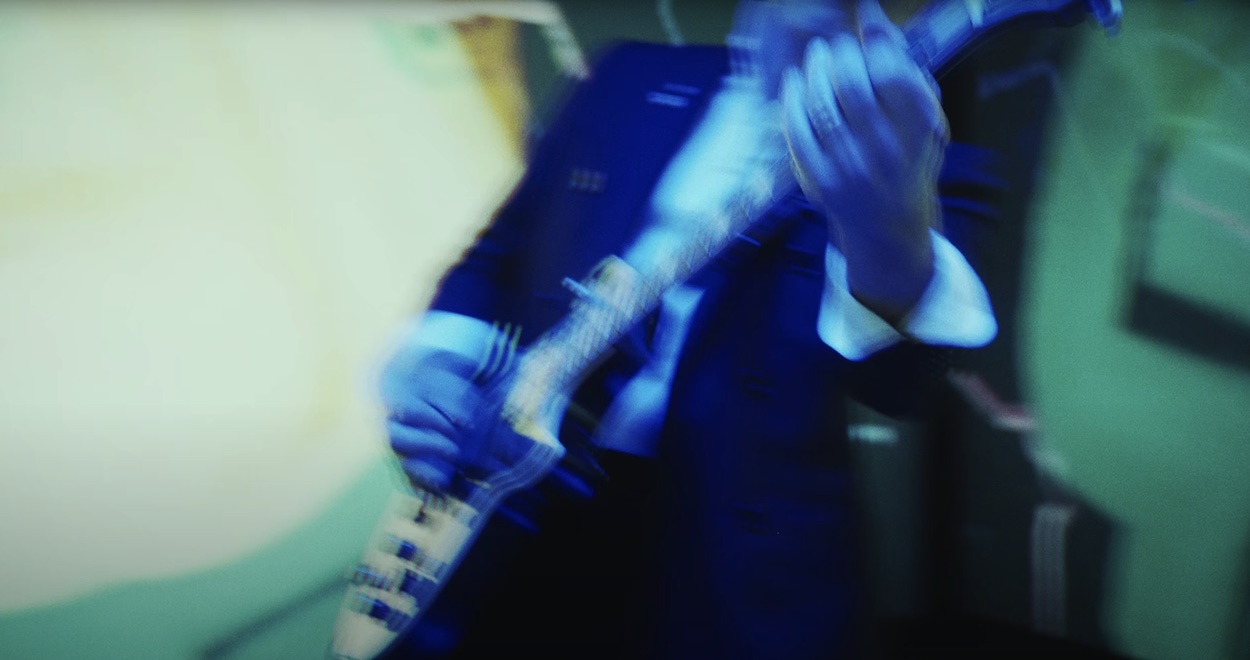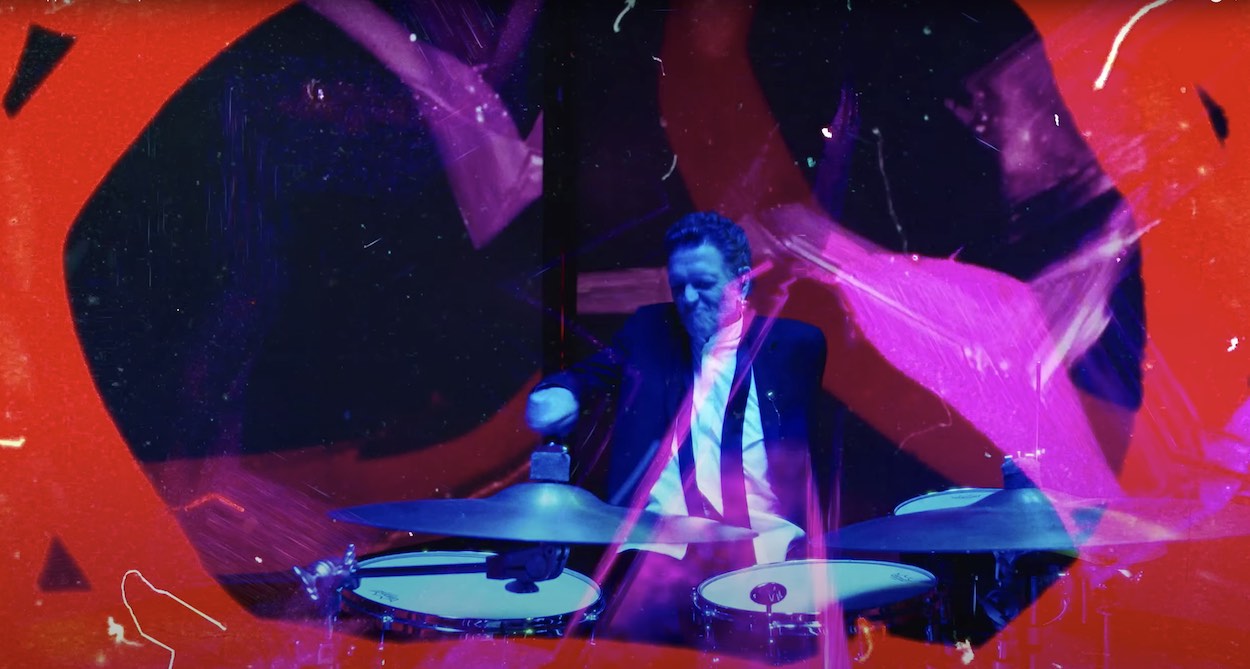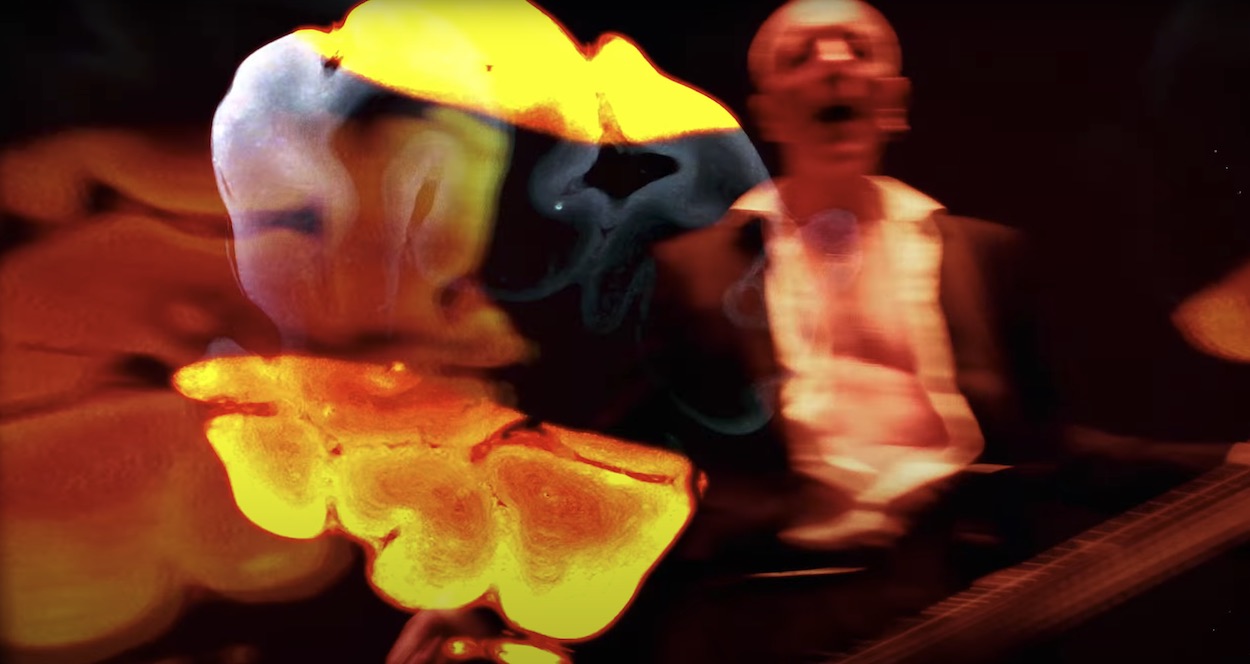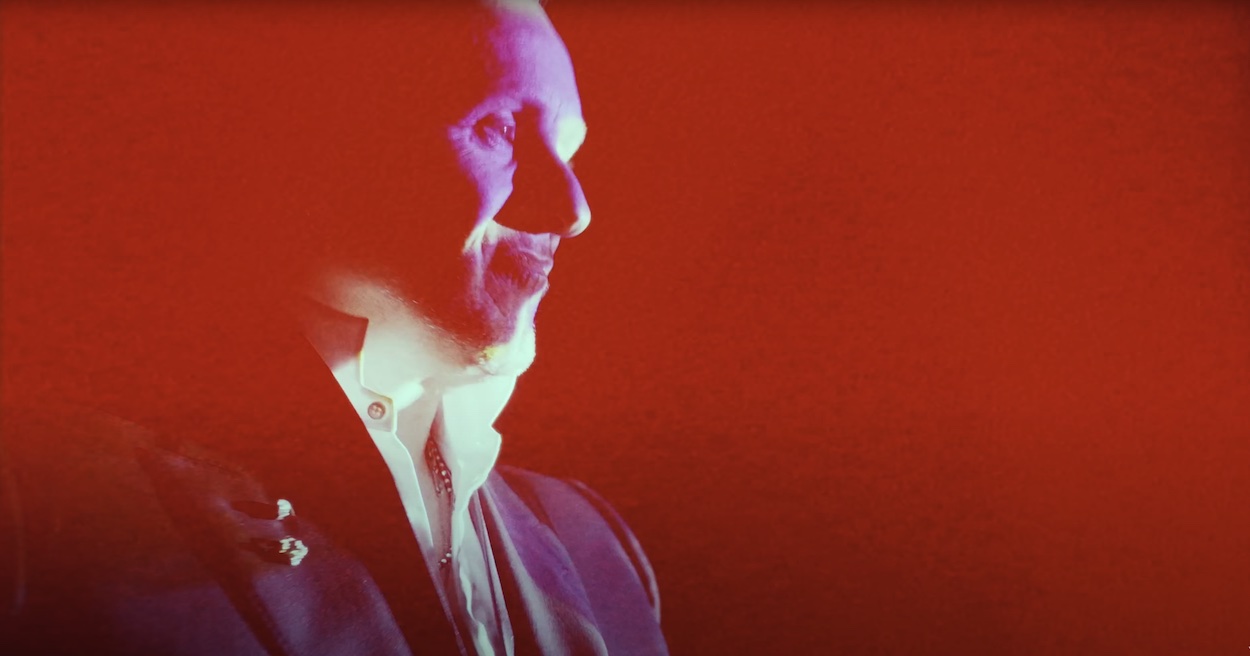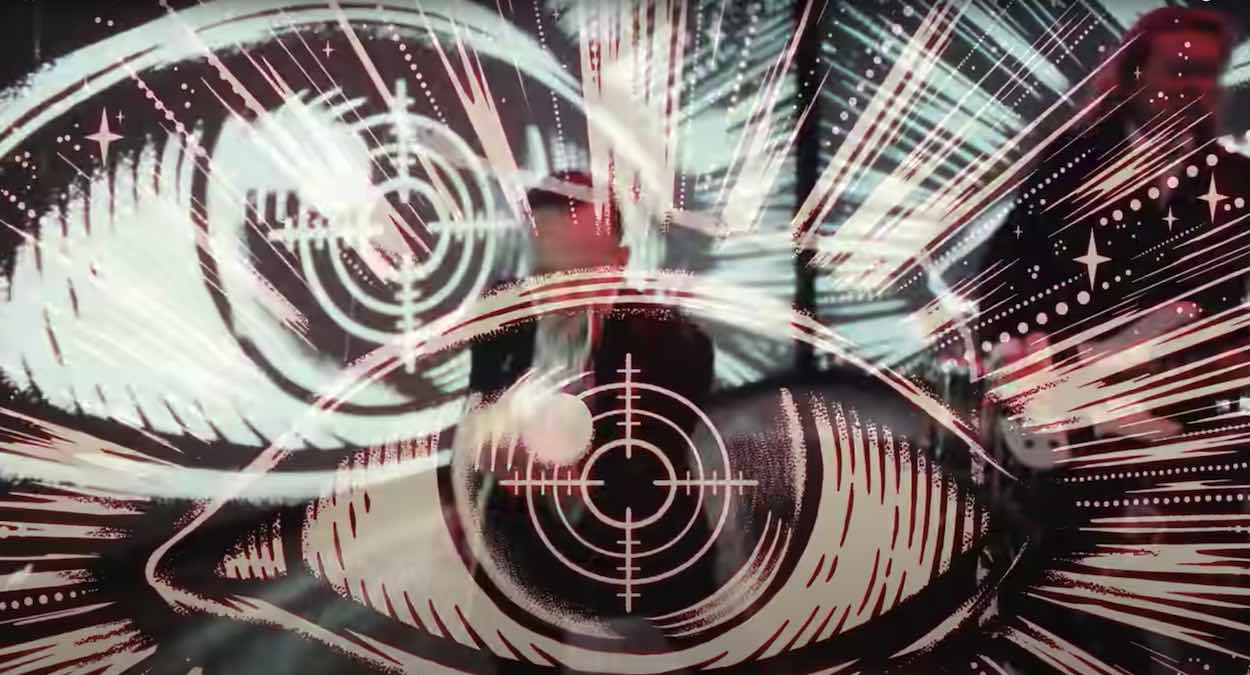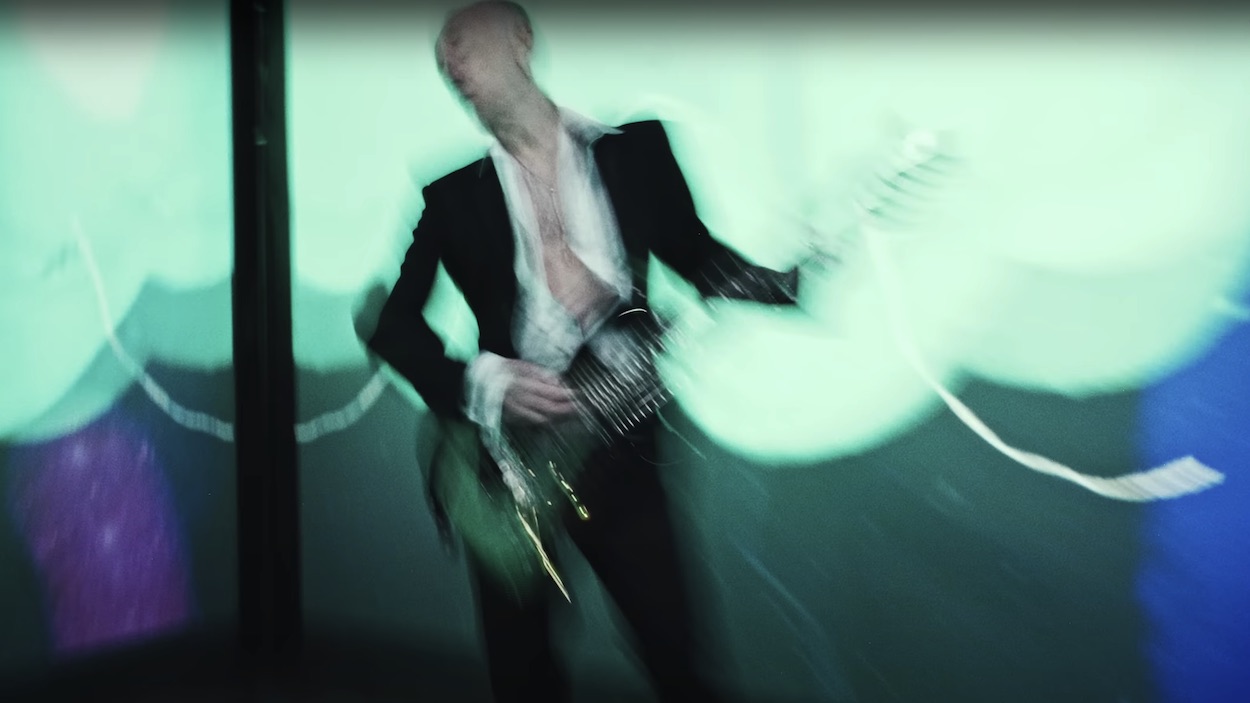All stills from Def Leppard’s Fire It Up
You’ve elevated what could have been a straightforward studio performance into something else with camera movements, lighting and animation. What was the initial brief – or conversations – like?
The main intention was to make a pre-recorded studio performance feel like a live experience, as well as channeling the excitement of the band performing again after two years of lockdown and seven years since their last album release. The initial treatment stated that four walls surround the band with projections on each surface. Animations of neurological scans, frantic images made from painting on film and images from the album cover will merge together to create a sensory overload of being fired up – the title of the track. The neurological motif was an important part for me as it was an idea based on chemicals being released in the brain from being fired up.
It was important for the band to draw reference to their musical inspirations. The Beatles being a pillar. I looked to the recent Get Back documentary to draw reference from the rehearsal space and the intimacy of the band.
Marayam Malakpour, the stylist, had the idea of dressing the band in suits to veer away from their previous looks. The elements of the suits such as the ties and shirts were then loosened during shooting to give a more casual feel.
To what extent did you map everything out in pre-prod, for instance were the back projections created specifically for the video?
The video was planned out pretty much to the nth degree. Peter Kent, the animator, prepared all of the visuals to a timecode, so when the visuals were played on screen on the day the track played in time. This meant that at specific moments there are either more vibrant colours or less so, or more or less frantic scratchings, depending on the rhythm of the track.
The one thing that couldn’t be planned was how the band would interact with the camera, but this wasn’t a worry as they’re Def Leppard!
Please tell us about the shoot? We’re also curious how many takes you got the band to play the track.
As you would expect, the band were true professionals. They have obviously been together for decades so they have a telepathic thread running through them, even after two years of lockdown. They feed into each other’s nuances and intrinsically know how to play off each other. This made my job easier as they took direction well and had an innate knowledge of how to look great playing their instruments. There was a general excitement to be recording a new track too, which definitely comes across in the finished product.
The shooting felt more intimate and enclosed due to the screens surrounding the band rather than them performing to a vast empty space, which I think helped contribute to the performance they gave. It was only the band and the Steadicam operator, Austin Phillips, in the four walled room. So Austin was effectively in a cage with Def Leppard.
What were the main challenges of the production? We can see the editing didn’t happen overnight…
The screens were the biggest head scratcher as they had to be large enough to be visible, but not too big to drown the band in a sea of colour and strobes; but also not too small so the five-piece band couldn’t fit within it.
The editor, Mike Radforth, and I worked to portray the energy and atmosphere that was felt on the day. The mix of Steadicam, handheld, low shutter and projections on the band were all techniques to try and emulate the live experience. We had a lot of fun editing the outro where we could really let our hair down with ripping guitars and overlaying the animations.
Your recent film Traumsprache for Trees Speak couldn’t be more different from Def Leppard’s video. Did you write the narrative and what was behind your decision to tell it in this way?
I don’t like being boxed into certain genres because I can challenge and stretch in multiple directions. I sometimes pick projects that are polar opposites in sound, however, there is still a running thread through all of my work whether visually or narrative. I sense a lot of my work can be summed up as having a bad trip.
Traumsprache is more of a mood and atmosphere piece with links to German expressionism. It’s a fever dream about a woman with a killer inside of her. Chiara D’Anna (The Duke of Burgundy, Berberian Sound Studio) and Ned Dennehy (Peaky Blinders, Tyrannosaur, Mandy) took direction exceptionally well whilst adding their own intrinsic flare to bring their characters alive without the tool of dialogue – not dissimilar from the best of silent film actors.
Trees Speak asked me to make a music video after I used one of their tracks for a fashion film for Patrick McDowell. Their music taps into dark psychological themes, something that appeals to me. They also gave me an enormous amount of creative freedom, which appeals to me too, as it would any director.
Each of your videos is different in style, with special effects being a strong element in your filmic language. Please describe your usual creative process – for instance do you visualize the effect you want to achieve from the get-go or does it evolve through a lot of experimenting?
Everything is in the planning, it’s the old adage: success comes with planning meets opportunity. I like to catastrophise before I go on set so I’m not floored if something goes wrong. However, I’m not so rigid that if something organic evolves I don’t see the potential for it, and have the opportunity to strengthen someone’s performance or add to the filmic narrative.
I carry out my experimentation before I go on set. My role as a director is to give a strong creative lead on set, so I don’t want to be overly experimental on the day and lose people’s confidence if it’s not working out.
How important is collaborating with regular crew to you?
Regular crew is a circle of trust, it’s your belt and braces. If you work with them long enough you’ll have that Def Leppard telepathy, you won’t have to over explain things to people you know well. When the pressure’s on and the clock is ticking you can recognise angst or worry even in the body language of those regular crew members, and you’ll know how to combat that.
That, of course, is not to say that I’m not up for working with new people. I think you can quickly tell when someone is part of your DNA, whether through their references or how quickly they respond enthusiastically to emails.
We love your fashion films. Now that you’ve joined Knucklehead will you be exploring other genres other than music videos?
My ideal workscape would be a constant mash up of music videos, fashion, commercials and eventually features. A boy can dream!
The elevator version of what led you to where you are now….
Obsessed by The Shining from a young age, studying English Literature at university that put me in good stead on how to write an email that’s not deleted to every camera rental house in London, Ice Film employing me, always hustling for creativity, being signed to Knucklehead.
Info:
Knucklehead website
Dylan Hayes website
@dylanrhayes
@knucklehead_hq
@oreokonedo
